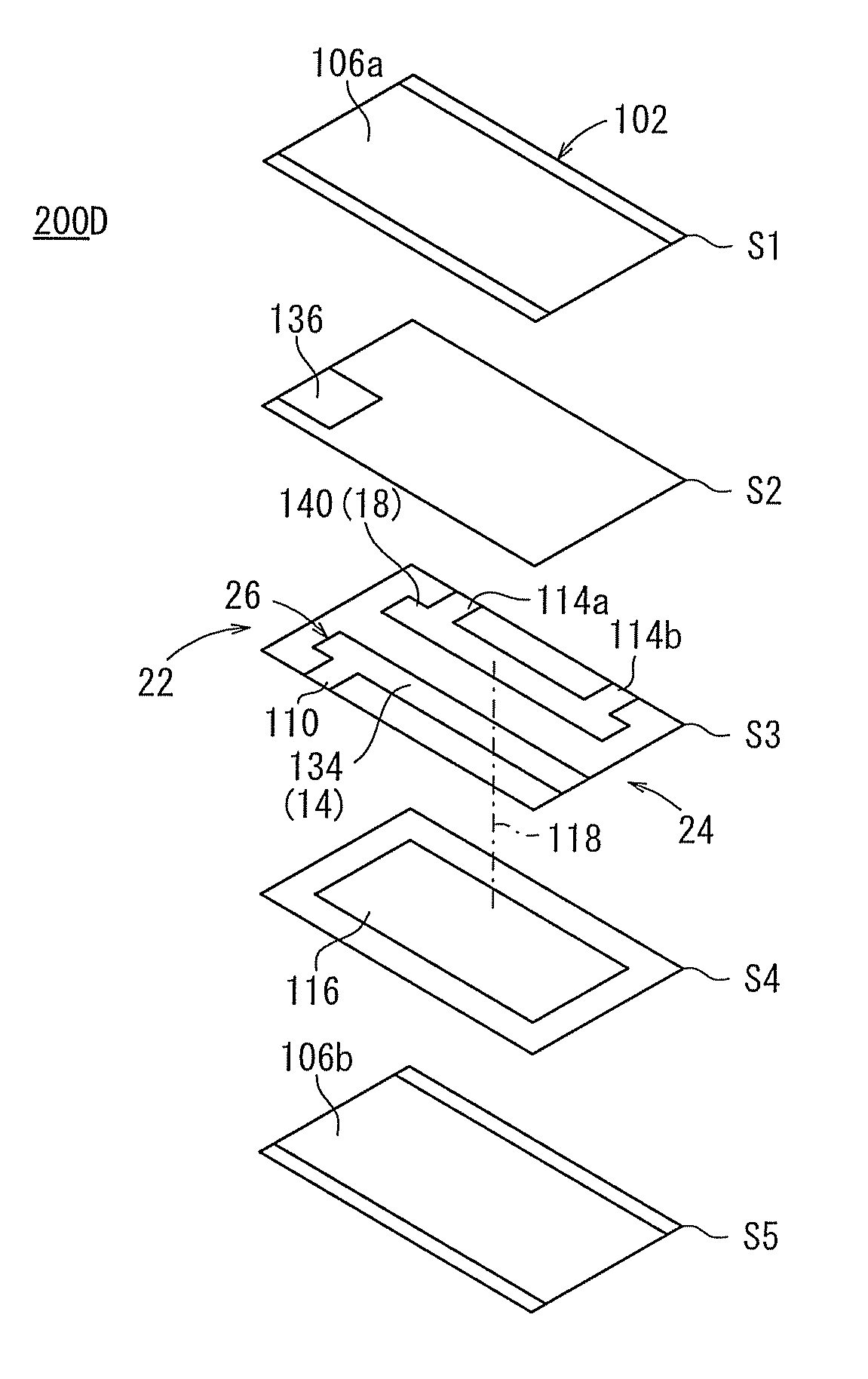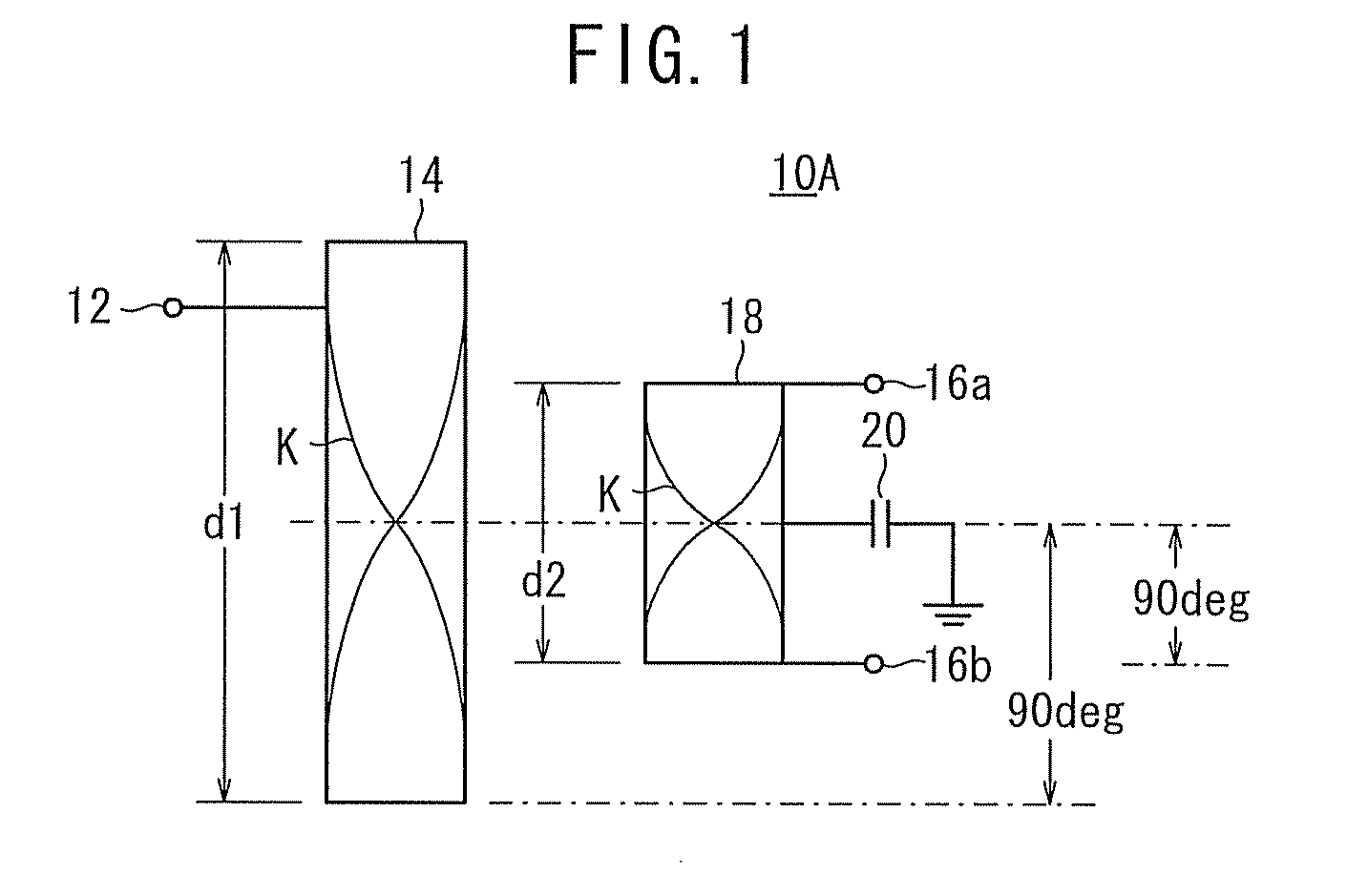Passive component
- Summary
- Abstract
- Description
- Claims
- Application Information
AI Technical Summary
Benefits of technology
Problems solved by technology
Method used
Image
Examples
specific examples (embodiments)
of the above various exemplary embodiments will be described below with reference to FIGS. 9 through 19.
embodiment 1
A balun according to Embodiment 1 (hereinafter referred to as “first balun 100A”) represents a first specific example of the second passive component 10B. As shown in FIG. 9, the first balun 100A has a dielectric substrate 102 comprising a plurality of dielectric layers stacked and sintered together. The dielectric substrate 102 has outer surfaces including a first side surface 102a with an unbalanced input terminal 12 disposed thereon, a second side surface 102b (a side surface facing the first side surface 102a) with two balanced output terminals (a first balanced output terminal 16a and a second balanced output terminal 16b) disposed thereon, and a third side surface 102c and a fourth side surface 102d with shield terminals 104 disposed respectively thereon.
As shown in FIG. 10, the dielectric substrate 102 comprises first through fifth dielectric layers S1 through S5 which are stacked successively from above. Each of the first through fifth dielectric layers S1-S5 comprises a sin...
embodiment 2
A balun according to Embodiment 2 (hereinafter referred to as “second balun 100B”) represents a second specific example of the second passive component 10B. The second balun 100B is of substantially the same structure as the first balun 100A, but is different therefrom as follows:
As shown in FIG. 11, the second balun 100B includes an unbalanced input terminal 12 and a DC voltage input terminal (DC input terminal 120) which are disposed on the first side surface 102a among the outer surfaces of the dielectric substrate 102.
As shown in FIG. 12, the capacitor-forming electrode 116 is connected to the DC input terminal 120 through a lead electrode 122, and also functions as an electrode (DC electrode 124) to which a DC voltage is applied. Therefore, the first balanced output terminal 16a and the second balanced output terminal 16b output balanced output signals including the DC voltage applied to the DC electrode 124 as a bias voltage.
PUM
 Login to View More
Login to View More Abstract
Description
Claims
Application Information
 Login to View More
Login to View More - Generate Ideas
- Intellectual Property
- Life Sciences
- Materials
- Tech Scout
- Unparalleled Data Quality
- Higher Quality Content
- 60% Fewer Hallucinations
Browse by: Latest US Patents, China's latest patents, Technical Efficacy Thesaurus, Application Domain, Technology Topic, Popular Technical Reports.
© 2025 PatSnap. All rights reserved.Legal|Privacy policy|Modern Slavery Act Transparency Statement|Sitemap|About US| Contact US: help@patsnap.com



